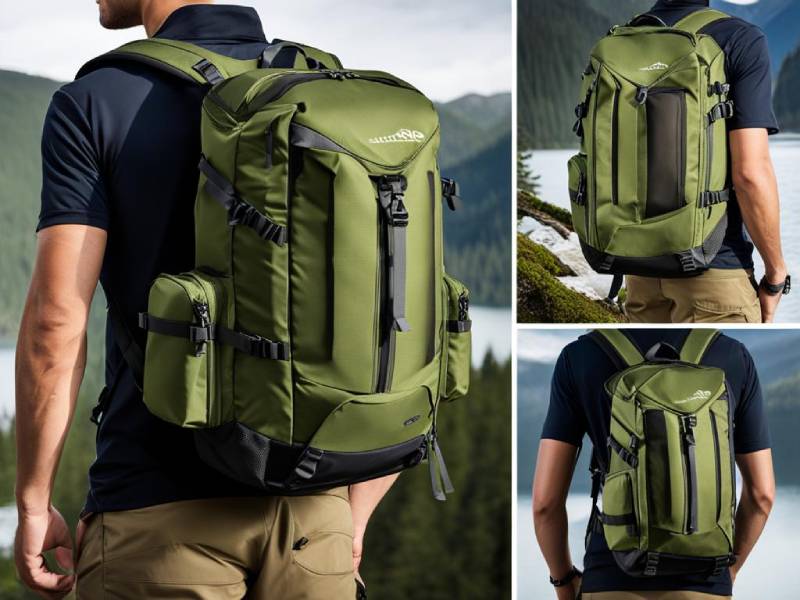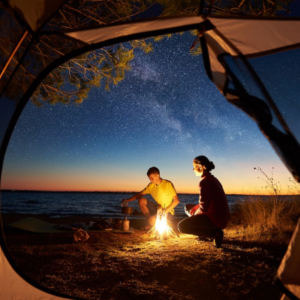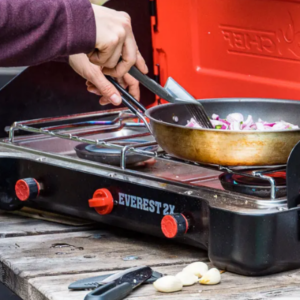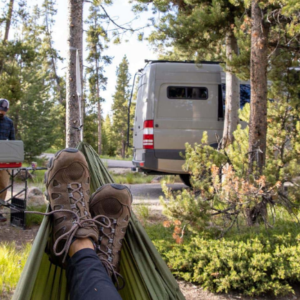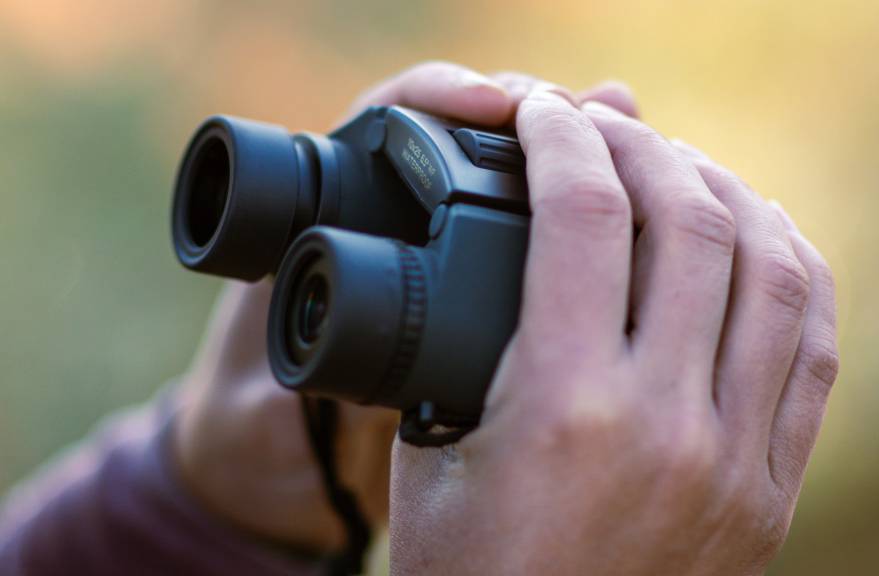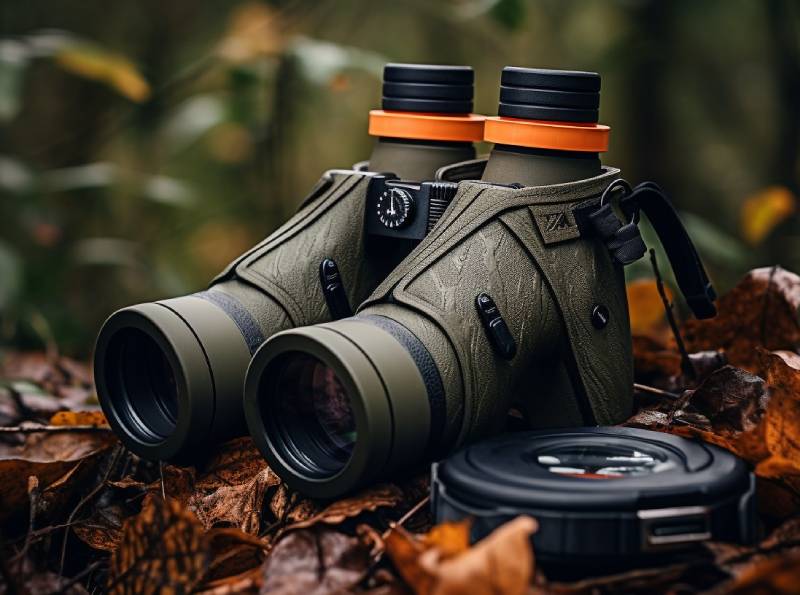Whether you’re planning a day hike or backpacking through a foreign country, finding the perfect backpack is essential for a successful and comfortable adventure. A high-quality backpack can make all the difference in terms of design, functionality, and durability.
In this section, we’ll explore the key factors to consider when choosing the perfect backpack. From size and weight to material and storage capacity, we’ll cover everything you need to know to make an informed decision.
Understanding the Different Types of Backpacks
When it comes to choosing a backpack, there are several types to consider, each designed for specific purposes. Understanding the differences between these backpacks can help you make an informed decision.
Hiking Backpacks
Hiking backpacks are designed for outdoor enthusiasts who enjoy exploring nature. These backpacks are lightweight, yet sturdy, and are equipped with comfortable straps and back panels, making them ideal for long hikes.
Features to consider:
- Load distribution straps to evenly distribute weight
- Compression straps to keep gear in place
- Hydration reservoirs to keep water accessible on the go
Camping Backpacks
Camping backpacks are designed for overnight camping trips and can carry essential gear, such as tents, sleeping bags, and cooking equipment. These backpacks are larger and more durable than hiking backpacks as they must withstand rugged environments.
Features to consider:
- Adjustable shoulder straps with load-lifter straps to distribute weight
- Multiple compartments for organizing gear
- Hydration compatibility for water storage
Travel Backpacks
Travel backpacks are designed for those who like to travel light. These backpacks are versatile and can be used for weekend trips or international travel. They are typically carry-on size and feature multiple compartments for organization.
Features to consider:
- Lockable zippers for added security
- Padded shoulder straps and back panel for comfort
- Convertible carry options, such as straps that tuck away for a sleeker look
>> See more: Materials of backpacks: What type of fabric is it made from?
Everyday Backpacks
Everyday backpacks are designed for those who need a backpack for daily use, such as commuting to work or school. These backpacks are versatile, lightweight, and stylish, making them ideal for everyday use.
Features to consider:
- Lightweight material for comfortable daily wear
- Multiple compartments for organizing work or school materials
- Padded laptop sleeve for protection
Choosing the right backpack depends on your specific needs and preferences. By understanding the differences between these types of backpacks, you can make an informed decision and find the perfect backpack for your adventures.
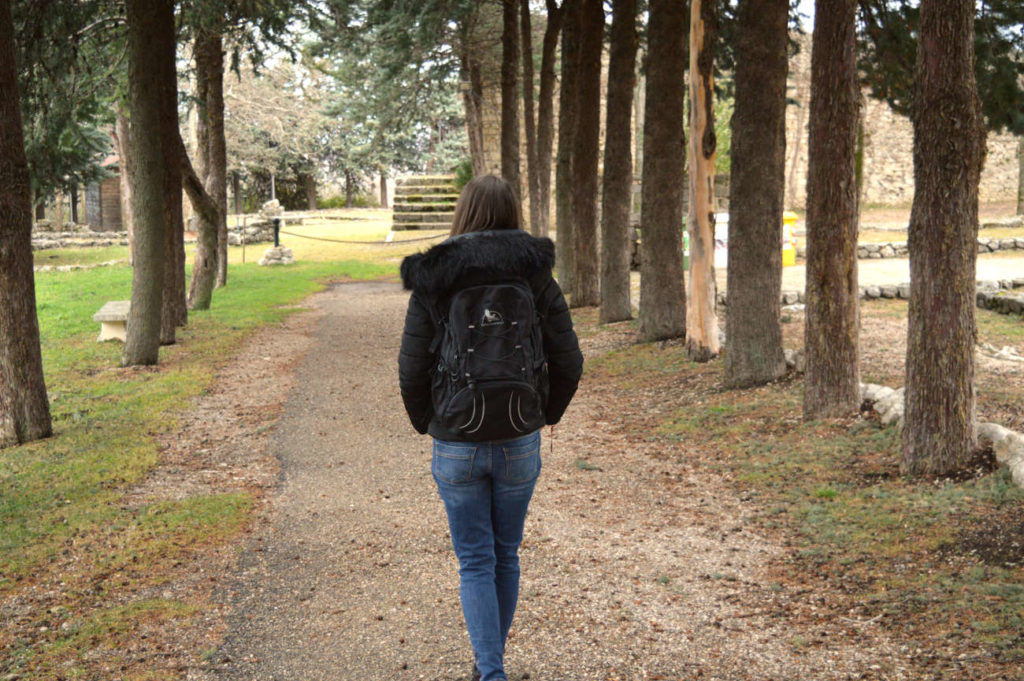
Factors to Consider When Choosing a Backpack
Choosing the right backpack is crucial for any adventure. Here are some factors to keep in mind when selecting a backpack:
- Size: Choose a backpack that is appropriate for your body size and the length of your trip. A large backpack may be comfortable for long trips but can be cumbersome for short ones.
- Weight: Your backpack’s weight should not exceed 20% of your body weight. For example, if you weigh 150lbs, your backpack should weigh no more than 30lbs.
- Material: Select a backpack made of durable, lightweight, and waterproof material. Nylon and Cordura are common materials used in high-quality backpacks.
- Comfort: Look for a backpack with adjustable straps, a padded back panel, and a waist belt for added support and comfort.
- Storage Capacity: Consider the number of compartments, pockets, and external attachment points you need to store your gear efficiently.
When selecting a backpack, it’s essential to ensure it fits correctly. A properly fitting backpack can prevent back and shoulder pain and provide more comfortable and efficient carrying of a heavy load.
Another essential factor to consider when selecting a backpack is the type of adventure you plan to undertake. Hiking and camping backpacks are designed differently from everyday-use backpacks or travel backpacks. Therefore, it’s essential to choose a backpack suitable for your adventure.

Take time to consider each of these factors when choosing a backpack. Doing so will ensure you select a backpack that suits your needs and provides you with comfort and convenience during your adventure.
Top Brands for Quality Backpacks
Choosing the right backpack brand is crucial when it comes to finding a quality backpack that meets your needs. Here are some of the top backpack brands known for their exceptional quality and durability:
| Brand | Highlights |
|---|---|
| Osprey | Osprey backpacks are known for their innovative designs that provide superior comfort and support, making them ideal for hiking and camping adventures. |
| North Face | North Face backpacks are designed for all types of adventures, and their range of outdoor gear ensures exceptional quality and durability. |
| Deuter | Deuter backpacks are engineered to provide maximum comfort and support, with a range of features that make them ideal for long hikes and outdoor adventures. |
| Patagonia | Patagonia backpacks are designed for eco-conscious adventurers, with backpacks made from recycled materials and innovative designs that make them ideal for outdoor use. |
| Gregory | Gregory backpacks are known for their exceptional quality and durability, with a range of designs that make them ideal for hiking, camping, and travel adventures. |
When selecting a backpack, it’s important to consider the brand’s reputation, product innovation, and durability. Investing in a quality backpack from a trusted brand ensures that you have a reliable companion on all your adventures.
Features to Look for in a Backpack
Choosing the right features in a backpack can make a significant difference in comfort and functionality. Here are some key backpack features to consider:
| Feature | Description |
|---|---|
| Adjustable straps | Shoulder straps that are adjustable offer additional comfort and support, allowing for a customizable fit. |
| Padded back panel | A padded back panel provides extra cushioning and support, reducing fatigue during long hikes or travels. |
| Multiple compartments | A backpack with multiple compartments offers better organization and accessibility to items, preventing the need to dig through every item in the backpack to find what you need. |
| Water resistance | A backpack with water-resistant material or a built-in rain cover can protect your belongings from wet weather conditions. |
| Ventilation system | A backpack with a ventilation system promotes air circulation, reducing perspiration and heat buildup, enhancing comfort on hot, humid days. |
| Padded hip belt | A padded hip belt eliminates pressure on the shoulders, transferring the weight to the hips, reducing fatigue and promoting comfort during long hikes. |
| Hydration system compatibility | Backpacks with hydration system compatibility allow for easy access to water, preventing dehydration during long hikes or outdoor activities. |
These features can enhance the functionality and usefulness of a backpack and should be a top priority when choosing the right backpack for your needs.
How to Properly Pack Your Backpack for Efficiency
If you want to have a comfortable and hassle-free adventure, learning how to pack your backpack correctly is crucial. Efficient packing not only ensures that you have everything you need, but also that your backpack is comfortable to carry and does not cause any undue strain on your back or shoulders.
Here are some tips on how to pack your backpack for maximum efficiency:
- Make a list: Before you start packing, make a list of everything you need to take with you. This will help you avoid forgetting anything important and also ensure that you don’t pack unnecessary items.
- Pack heavy items at the bottom: Place the heaviest items at the bottom of your backpack, close to your back. This will help distribute the weight evenly across your body and prevent any strain on your back or shoulders.
- Optimize space: Use the space in your backpack as efficiently as possible. Roll your clothes instead of folding them, and use packing cubes to keep items organized and compressed.
- Keep frequently used items accessible: Pack items you will need frequently, such as snacks, water, and a map, in pockets or compartments you can easily reach without having to take off your backpack.
- Consider balance: When packing, make sure you distribute the weight of your items evenly on both sides of your backpack. This will help you maintain your balance while hiking.
- Use compression straps: Use the compression straps on your backpack to compress the load, making it more stable and easier to carry.
Efficient packing is not just about what you pack, but how you pack it. Focus on optimizing space and weight distribution to ensure that your backpack is comfortable and easy to carry on any adventure.
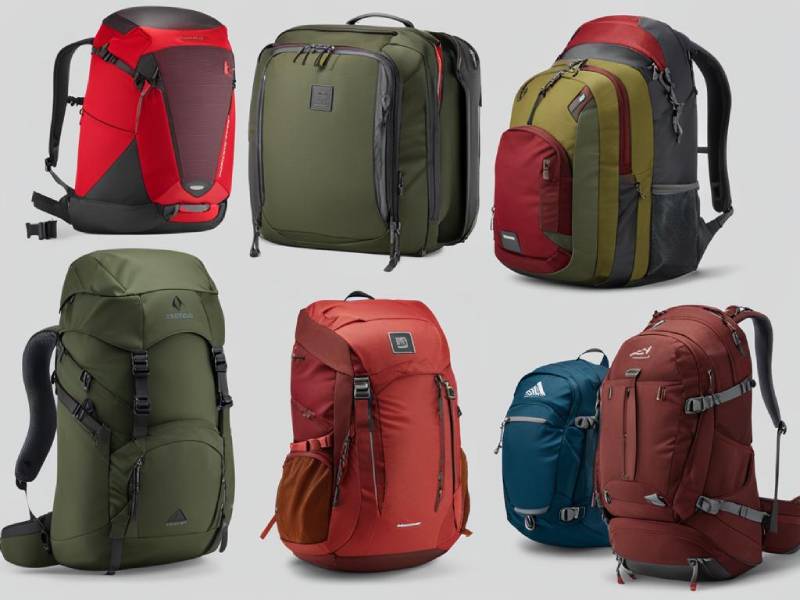
Maintenance and Care for Your Backpack
Proper maintenance and care can ensure that your backpack lasts for years to come. Regular cleaning and storage can prevent wear and tear, while repairs can fix small issues before they become major problems.
Here are some essential tips for maintaining and caring for your backpack:
1. Cleaning
When it comes to cleaning your backpack, it’s essential to follow the manufacturer’s instructions. Most backpacks can be cleaned using mild soap, water, and a soft brush. Avoid using harsh chemicals or bleach as they can damage the material.
Start by removing any loose dirt or debris with a gentle brush. Then, fill a sink or bathtub with lukewarm water and add a small amount of mild soap. Gently hand wash the backpack and rinse thoroughly to remove any soap residue. Hang the backpack to dry naturally, avoiding direct sunlight or heat sources.
2. Storage
Storing your backpack properly can prevent it from getting squished or misshapen. When not in use, stuff the backpack with soft items like clothing to help it maintain its shape. Store the backpack in a cool, dry place, and avoid folding it or compressing it for long periods.
3. Repairs
Small tears, broken zippers, and loose straps can all be repaired easily at home with a few basic tools. Invest in a sewing kit and keep it on hand for minor repairs. For more complex repairs, consider taking your backpack to a professional.
4. Additional Care Tips
Here are some additional care tips to keep in mind:
- Do not machine wash or dry your backpack.
- Avoid overloading your backpack, as this can put unnecessary strain on the straps and zippers.
- Apply a waterproofing spray to help protect against water damage.
- Avoid leaving your backpack in direct sunlight for prolonged periods, as this can cause the fabric to fade.
By following these tips, you can ensure that your backpack stays in top condition for all your adventures.
Backpack Accessories for Enhanced Functionality
When it comes to backpacks, accessories can make all the difference in enhancing functionality and convenience on any adventure. From staying hydrated to organizing gear, here are some of the essential backpack accessories to consider:
Hydration Systems
Dehydration can be a significant issue when exploring the great outdoors. A hydration system, such as a backpack water bladder, is a convenient way to stay hydrated while on the move. These systems typically consist of a water reservoir, a drinking tube, and a bite valve. They are designed to fit snugly into most backpacks and are ideal for hiking, camping, or any adventure where drinking water is essential.
Rain Covers
Weather can be unpredictable, and a surprise downpour can quickly ruin a backpack and the gear inside it. A rain cover is an inexpensive accessory that can keep backpacks dry in wet conditions. They come in various sizes and are easy to pack away when not in use.
Additional Storage Options
When extra storage space is needed, there are several backpack accessories that can help. Consider adding a backpack organizer to keep gear neat and tidy, or a compression sack to reduce the volume of bulky items. Some backpacks also come with attachment points for additional pockets or pouches.
Security Features
For those traveling in areas with high crime rates or simply want peace of mind, anti-theft backpack accessories are a must-have. These include features such as slash-proof fabric, lockable zippers, and RFID blocking technology to prevent identity theft.
Backpack Straps and Pads
Backpack straps and pads can make a significant difference in the comfort level of a backpack. Consider investing in padded shoulder straps, back panels, and hip belts for added comfort on longer trips. Adjustable straps allow for a more customized fit, while sternum straps can provide additional support and stability.
Budget-Friendly Backpack Options
When it comes to backpacks, you don’t always have to break the bank to find a high-quality option that meets your needs. Whether you’re a student on a tight budget, a budget-conscious adventurer, or simply looking for a great deal, there are plenty of affordable backpack options available.
Here are some budget-friendly backpacks that offer excellent value for money:
| Backpack | Features | Price |
|---|---|---|
| AmazonBasics Backpack | Multiple compartments, padded straps and back panel, water-resistant material | $25 |
| Outlander Packable Backpack | Lightweight, durable, compact design, water-resistant material, multiple compartments | $20 |
| High Sierra Swerve Backpack | Multiple compartments, organizer pocket, padded straps and back panel, mesh pocket for water bottle | $40 |
| JanSport SuperBreak Backpack | Large main compartment, front utility pocket, padded back panel, available in a variety of colors and patterns | $35 |
These backpacks offer a range of features, from multiple compartments to padded straps and back panels, making them comfortable and practical options for all types of adventures. Plus, with prices ranging from $20 to $40, they won’t break the bank.
When shopping for a budget-friendly backpack, it’s important to keep in mind that you may have to make some sacrifices in terms of design or material quality. However, by choosing a reputable brand and paying attention to customer reviews, you can still find a backpack that meets your needs and fits your budget.
Conclusion
In conclusion, finding the perfect backpack for every adventure is crucial to ensure a hassle-free and enjoyable experience. By understanding the different types of backpacks available and considering factors like size, weight, comfort, and storage capacity, you can make an informed decision.
High-quality backpack brands like Osprey, Deuter, and Gregory offer innovative and durable options, while features like adjustable straps, padded back panels, and water resistance can be game-changers for your backpacking adventures. Proper packing techniques and maintenance practices can also extend the longevity of your backpack.
Don’t let budget constraints hold you back from finding the perfect backpack. Affordable backpack options like Teton Sports and Venture Pal offer great value for money without compromising on quality.
Remember, a backpack is more than just a bag; it’s your companion on your adventure. So take your time, do your research, and find the perfect backpack for your next adventure!
FAQ
What makes a backpack perfect for every adventure?
A perfect backpack for every adventure should have qualities such as quality construction, functional design, and durability. It should be able to comfortably carry the necessary gear and provide easy access to it while on the go.
What are the different types of backpacks available?
There are various types of backpacks designed for specific purposes. Some common types include hiking backpacks, camping backpacks, travel backpacks, and everyday backpacks. Each type comes with its own features and benefits suited for different activities.
What factors should I consider when choosing a backpack?
When selecting a backpack, important factors to consider include size, weight, material, comfort, and storage capacity. It’s essential to choose a backpack that fits your body well and meets your specific needs for the intended adventure.
What are some top brands known for quality backpacks?
Some top brands recognized for manufacturing high-quality backpacks include Osprey, The North Face, Patagonia, and Deuter. These brands have a reputation for innovation, durability, and customer satisfaction.
What features should I look for in a backpack?
Key features to look for in a backpack include adjustable straps for a customized fit, padded back panels for comfort, multiple compartments for organization, and water resistance to keep your belongings protected from the elements.
How can I efficiently pack my backpack?
To pack your backpack efficiently, consider strategies such as rolling clothes to save space, distributing weight evenly by placing heavier items closer to your back, and using packing cubes or compression bags to organize belongings.
How should I maintain and care for my backpack?
Proper maintenance of your backpack is important for its longevity. Regular cleaning, proper storage to prevent damage, and timely repairs for any wear and tear are essential to keep your backpack in optimal condition.
Are there any accessories that can enhance the functionality of a backpack?
Yes, there are backpack accessories available that can enhance its functionality. Some popular accessories include rain covers to protect against wet weather, hydration systems for easy access to water, and additional storage options like pouches or external pockets.
Are there affordable backpack options available?
Absolutely! There are budget-friendly backpack options available that offer good quality and value for money. These backpacks may not have all the high-end features, but they still provide functionality and durability at a more affordable price point.
Posts you may like:

